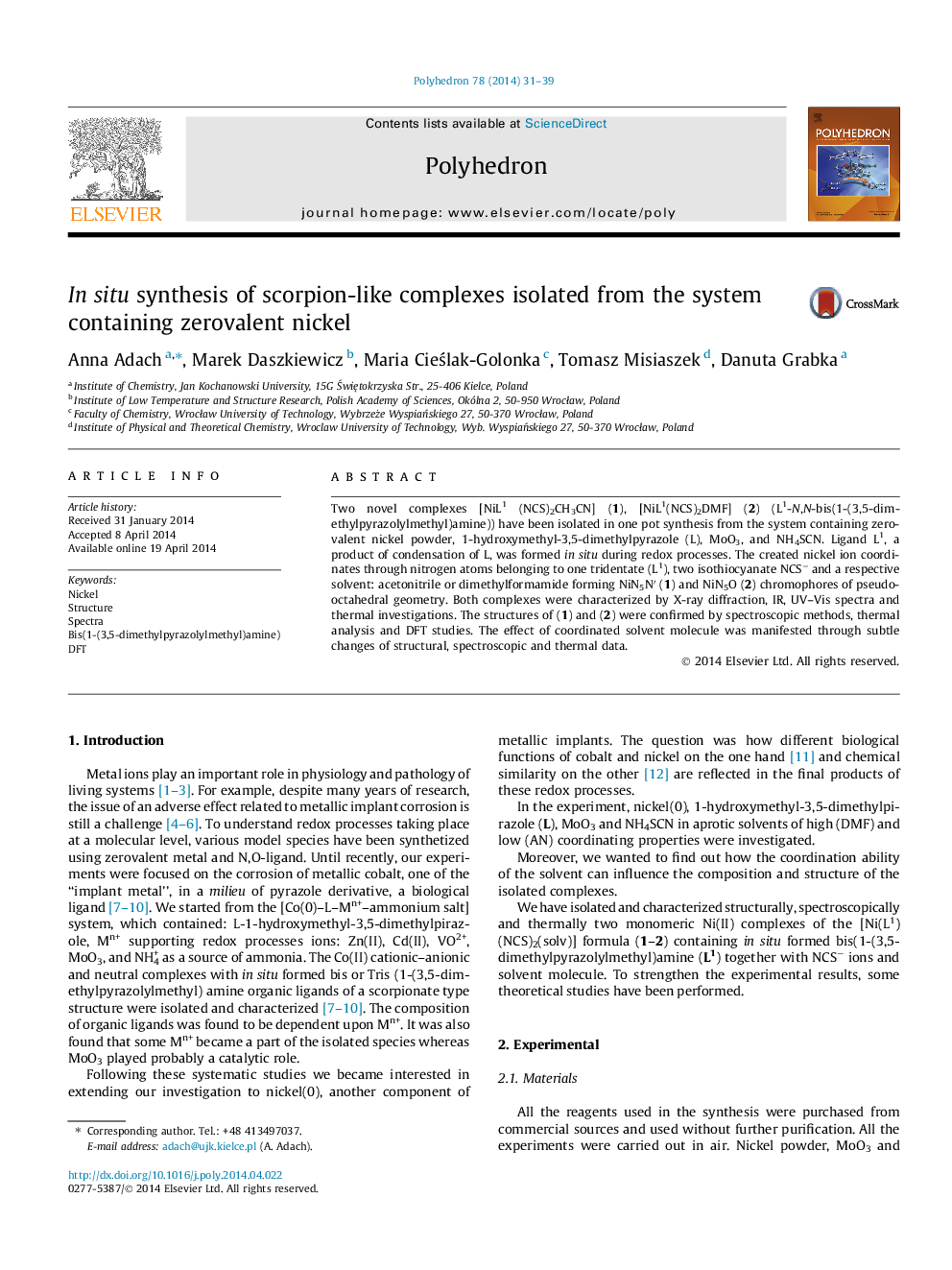| Article ID | Journal | Published Year | Pages | File Type |
|---|---|---|---|---|
| 1337820 | Polyhedron | 2014 | 9 Pages |
Two novel complexes [NiL1 (NCS)2CH3CN] (1), [NiL1(NCS)2DMF] (2) (L1-N,N-bis(1-(3,5-dimethylpyrazolylmethyl)amine)) have been isolated in one pot synthesis from the system containing zerovalent nickel powder, 1-hydroxymethyl-3,5-dimethylpyrazole (L), MoO3, and NH4SCN. Ligand L1, a product of condensation of L, was formed in situ during redox processes. The created nickel ion coordinates through nitrogen atoms belonging to one tridentate (L1), two isothiocyanate NCS− and a respective solvent: acetonitrile or dimethylformamide forming NiN5N′ (1) and NiN5O (2) chromophores of pseudooctahedral geometry. Both complexes were characterized by X-ray diffraction, IR, UV–Vis spectra and thermal investigations. The structures of (1) and (2) were confirmed by spectroscopic methods, thermal analysis and DFT studies. The effect of coordinated solvent molecule was manifested through subtle changes of structural, spectroscopic and thermal data.
Graphical abstractTwo novel complexes [NiL1 (NCS)2CH3CN] (1), [NiL1(NCS)2DMF] (2) (L1-N,N-bis(1-(3,5-dimethylpyrazolylmethyl)amine)) have been isolated in one pot synthesis from the system containing zerovalent nickel powder, 1-hydroxymethyl-3,5-dimethylpyrazole (L), MoO3, and NH4SCN as a substrates.The heteroleptic, mononuclear Ni(II) complexes contain not only a scorpion-like ligand (L1) but also monodentate NCS− ions and solvent molecules (CH3CN and DMF) in the coordination sphere. Ligand L1, a product of condensation of L, was formed in situ during redox processes.Figure optionsDownload full-size imageDownload as PowerPoint slide
